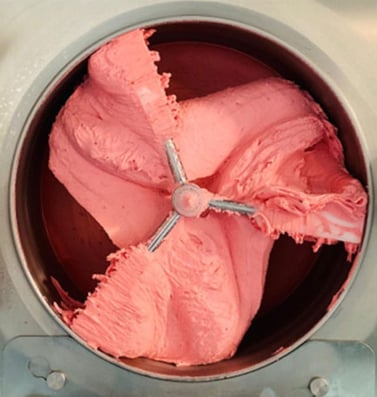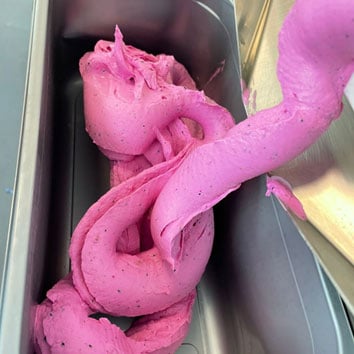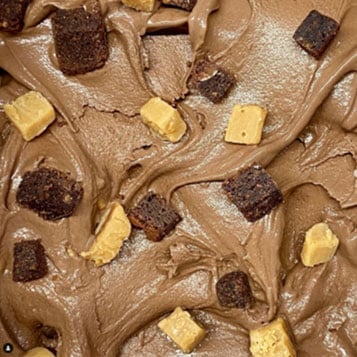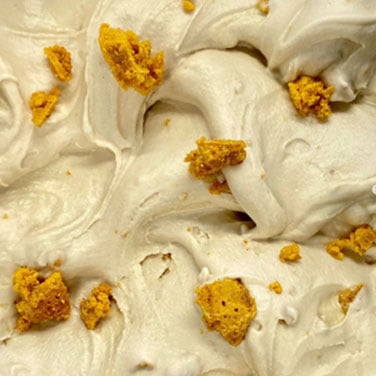The Science of Gelato
When you first start learning about the art and science behind the perfect gelato, you’ll wish you’d paid more attention during Chemistry lessons. Ice crystals, fat droplets and air bubbles, it’s an equation that needs to be perfectly balanced to create the perfect Italian gelato.
We’re not going to give too much away here, some of this stuff is top secret, but in the spirit of sharing our expert knowledge, here’s a little insight from our Development Chef Joe, our in-house guru.

Water and solids
It’s a balance, the % of water to solids. Solids soak up the water so there is less ice when the gelato is frozen. This helps to produce a ‘warmer’ and smoother product. The idea is to create fewer ice crystals, which in turn helps to create that deliciously smooth gelato. If you taste watery ice or can even see ice crystals in your gelato then reduce the water content/ increase the solids. It’s the fine art of balance.
Fat content
Typically, the fat content for gelato is around 6%. This can be quite a lot lower than ice cream and is what helps the flavour of the gelato to shine through without leaving a ‘fatty coating’ in your mouth.

Serving temperature
Italian gelato is served at -140C, this is generally ‘warmer’ than ice cream (and so it can help to reduce ‘brain freeze’!). As it’s not kept under such harsh, frozen conditions, it tends to have only a 3 or 4 day shelf life. This is a positive though, it means that you will have to make your gelato more often and this gives it a fresh and delicious taste (rather than something that has been frozen for weeks). A freshly made gelato is a beautiful thing, full of robust flavours that linger on the palate.
Air incorporation
Fast churning of a product creates air, which in turn makes a light mixture, impacting mouthfeel and viscosity. It’s also a reason why gelato can be more expensive to make than ice cream, as we aim for less than 30% air, which means more ingredients have to be used, so more mouthfeel, texture and taste.

Sugar
We have to talk about sugar. There’s so much hype (and not in a good way) about reducing our sugar intake, so, many try to replace the sugar in their gelato recipe with sweeteners, honey etc., but it’s a finely balanced recipe and sugar is important as it helps to reduce the freezing point of the gelato. It’s a solid that delivers sweetness and if you try to replace it with sweeteners (artificial or natural), you will impact your gelato. Some sweeteners are a lot sweeter than sugar which means you need less of them from a taste point of view but less sweetener means less solids … see where we’re going with this?
Good quality ingredients
It goes without saying that good quality fresh milk and cream are essential to good gelato. And if you’re spending so much money, time and effort to create a truly delicious product, you need good ingredients.
And of course, when you have perfected the formulation, you need the best equipment to make your gelato… well that’s the easy bit.

The Best Artisan Gelato Machines
Find out more about Carpigiani's range of Artisan Gelato machines.
Topics from this blog: Gelato Artisan Gelato Ice Cream
